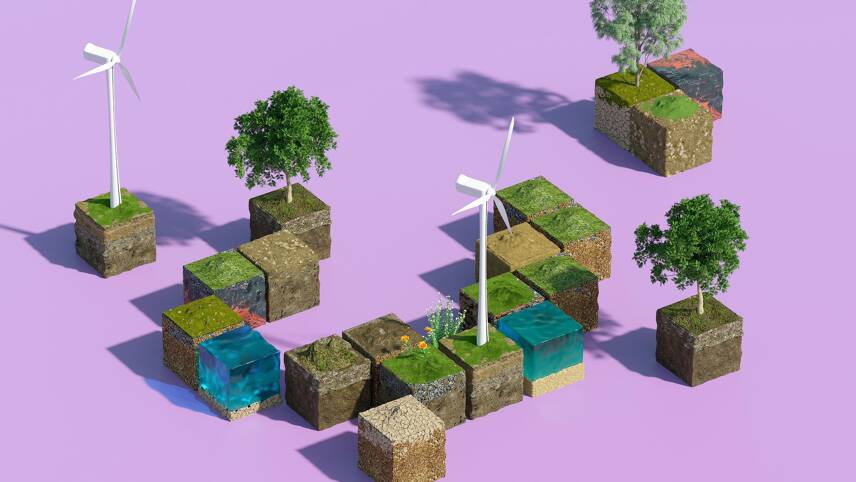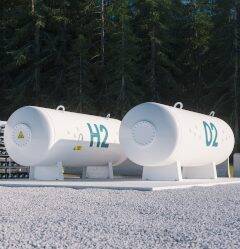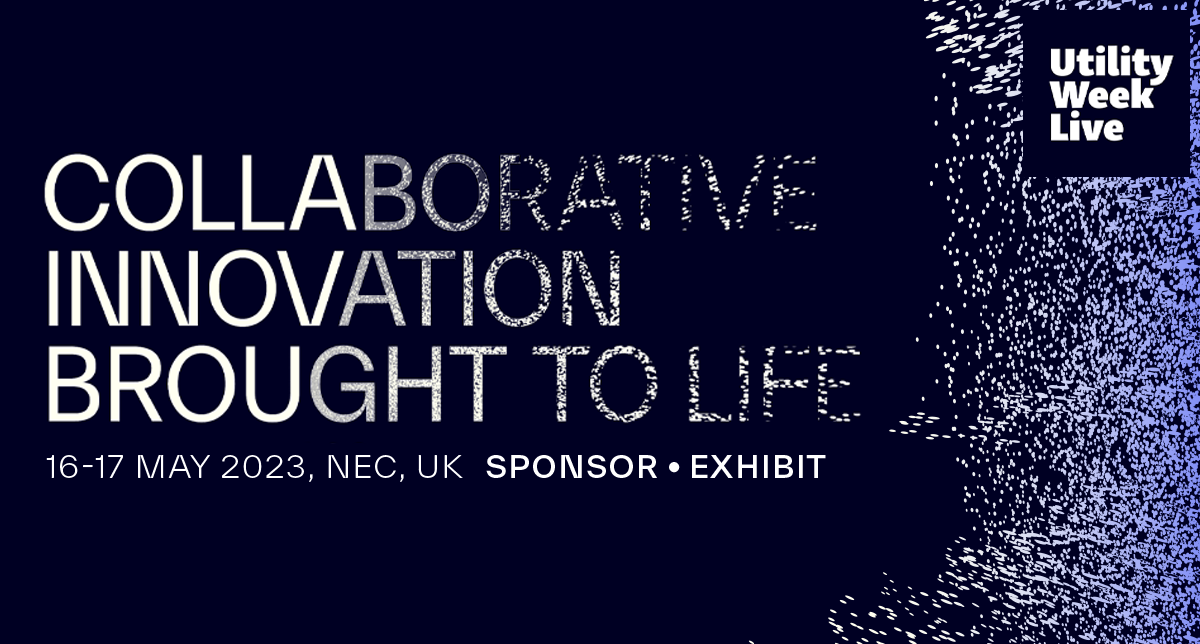You’ve reached your limit!
To continue enjoying Utility Week Innovate, brought to you in association with Utility Week Live or gain unlimited Utility Week site access choose the option that applies to you below:
Register to access Utility Week Innovate
- Get the latest insight on frontline business challenges
- Receive specialist sector newsletters to keep you informed
- Access our Utility Week Innovate content for free
- Join us in bringing collaborative innovation to life at Utility Week Live

Project delivery experts from Hitachi Energy, Cadent and Anglian Water reflect on some of the key areas through which utilities can transform capital delivery in line with net zero aspirations.
Complicated infrastructure projects which have strayed beyond budget, and subsequent narratives around incompetence, have allowed fears of failure and trying something new to infiltrate the utilities sector, according to Sam Ridsdale, global account director at Hitachi Energy.
However, faced with looming environmental challenges, she told a Utility Week roundtable that the industry needs to imminently innovate and move away from such restraints.
“There is a clear sense that we, as an industry, need to do something,” she said. “We need to act now. A lot of the answers absolutely lie in collaboration – essentially, building trust and working together.
“There are a whole host of regulatory challenges, as well as technical challenges,” she added. “But aside from that, we need to get together in a very transparent way to work out what we need to do to ensure that we – as individuals and as businesses – are not the blockers to progress.”
“If you’re thinking about apportioning risk correctly, for example, I would prefer to explicitly set out the cost of taking on a certain level of risk from the very beginning,” Ridsdale continued. “I think those are the kinds of conversations around projects that we need to be having. We need a much more open approach from the outset.”
Capital delivery roadmap
On top of this, Neil Bethell, capital delivery director at Cadent, explained that the cornerstone of achieving net-zero capital delivery is establishing a clear, long-term strategy to decarbonise projects that can be translated into a replicable roadmap.
“We identified four key phases of a capital project to focus on,” he said.
Firstly, design. “Considering how we can minimise environmental impact and maximise sustainability through selecting low carbon equipment and materials and thinking about the carbon impact of the operation and maintenance of the site.”
Second, procurement. “Identifying low carbon solutions, for example, pipe suppliers that have lowered their carbon impact, suppliers local to the project where possible, and construction partners that have a clear track record of implementing best practice and lowering their carbon impact. We are now using carbon impact as one of our tender evaluation criteria, and are well on the way to establishing ‘carbon budgets’ to determine the value our suppliers can contribute as we work together on our journey.”
Thirdly, construction. “Working with our partners to use low carbon technology, processes and equipment to build the solutions.” And finally, operate and maintain. “Considering how the site will be maintained, including minimising venting, low energy consumption, equipment that needs less maintenance, and what consumables and tools will be needed to maintain the sites.”

- Resilience, reliability and collaborative transformation to adopt technology and innovation are among the key themes at the Utility Week Forum, which will take place in London on 8-9 November. Find out more here.
Low carbon materials
Sam Garbutt, innovation lead at Anglian Water’s @one Alliance – which formally links Anglian’s capital delivery team with six key contractors and the wider supply chain through framework agreements – added that some of the biggest carbon savings in capital delivery could be unlocked by the wider availability, understanding and adoption of low carbon materials such as concrete alternatives.
 “Great work has already been done to use alterative products and methods in places where we use concrete, but certain applications still require us to use concrete to achieve our needs,” he explained.
“Great work has already been done to use alterative products and methods in places where we use concrete, but certain applications still require us to use concrete to achieve our needs,” he explained.
“Working with the supply chain to really understand what the alternatives are and how we can apply them with the correct due diligence and assurance in place has huge potential to save carbon where we absolutely must use concrete.”
Digital design and construction
Advances in digital design and construction techniques have accelerated how utilities collaborate and deliver infrastructure programmes – an area that Garbutt added is “only getting started” given the potential for VR and AR technology to “fundamentally change” capital delivery.
“We have never had more information available to us at the touch of a button and are able to use this information to accelerate our delivery programmes and even complete site walk throughs before we start construction in the real world, allowing us to deliver the real world assets right first time,” he said.
“Here in the @one Alliance, we have been using a VR platform to build 3D models of our new assets before we start construction. This allows us to ‘walk’ the site with operational staff and understand any challenges or opportunity’s in the design before we start on site. We simply could not do this from a 2D drawing or even a 3D model on a screen.”

Supply chain collaboration
Bethell added that modelling the carbon impact of designs, carrying out “carbon value engineering”, and recording the carbon impact of individual capital projects by collaborating with the supply chain who report using the School of Sustainability tool, has helped the rollout of a range of low carbon technologies throughout capital delivery projects.
“We have seen rapid take up of low carbon fuels and power generation, such as HVO fuels,” he said. “Hybrid construction plant is beginning to be utilised on our sites. Approaches to waste management are becoming very mature – our capital projects currently send less than 1% of waste produced to landfill.
 “Perhaps the biggest progress has been developing relationships with innovative supply partners who have solutions to offer, and working with them to trial and adopt their technology.”
“Perhaps the biggest progress has been developing relationships with innovative supply partners who have solutions to offer, and working with them to trial and adopt their technology.”
A role for hydrogen?
Perhaps the biggest contribution that gas companies can make to the decarbonisation of the UK economy is to integrate hydrogen networks into the decarbonisation of industry and domestic energy, according to Bethell.
 He explained that Cadent – which supplies gas to 11 million homes and businesses throughout the North West, West Midlands, East Midlands, South Yorkshire, East of England and North London – has already held discussions with a major construction plant manufacturer about how hydrogen fuelled construction plant can infiltrate mainstream fleets.
He explained that Cadent – which supplies gas to 11 million homes and businesses throughout the North West, West Midlands, East Midlands, South Yorkshire, East of England and North London – has already held discussions with a major construction plant manufacturer about how hydrogen fuelled construction plant can infiltrate mainstream fleets.
“We have now successfully utilised hydrogen fuelled power generation, and the use of hydrogen fuel cell portable lighting columns,” he said. “Hydrogen is currently a relatively expensive method of power generation for construction sites when compared to diesel, for example, but we believe that convergence will happen rapidly as bulk hydrogen becomes more readily available and duty exemption is removed from red diesel.
“As part of our roadmap, we are currently evaluating modular solutions to temporary site accommodation, such as photovoltaic cells on cabins, with HVO backup generators, and even hydrogen fuel cells as a further source.”
 Utility Week Innovate, in collaboration with Utility Week Live aims to discover and promote innovative approaches to tackle front line business challenges through case studies, technical/project studies, networking, and live content. Be recognised as a key solution provider and meet your target audience face-to-face at UWL23. Find out more about exhibiting
Utility Week Innovate, in collaboration with Utility Week Live aims to discover and promote innovative approaches to tackle front line business challenges through case studies, technical/project studies, networking, and live content. Be recognised as a key solution provider and meet your target audience face-to-face at UWL23. Find out more about exhibiting
Please login or Register to leave a comment.